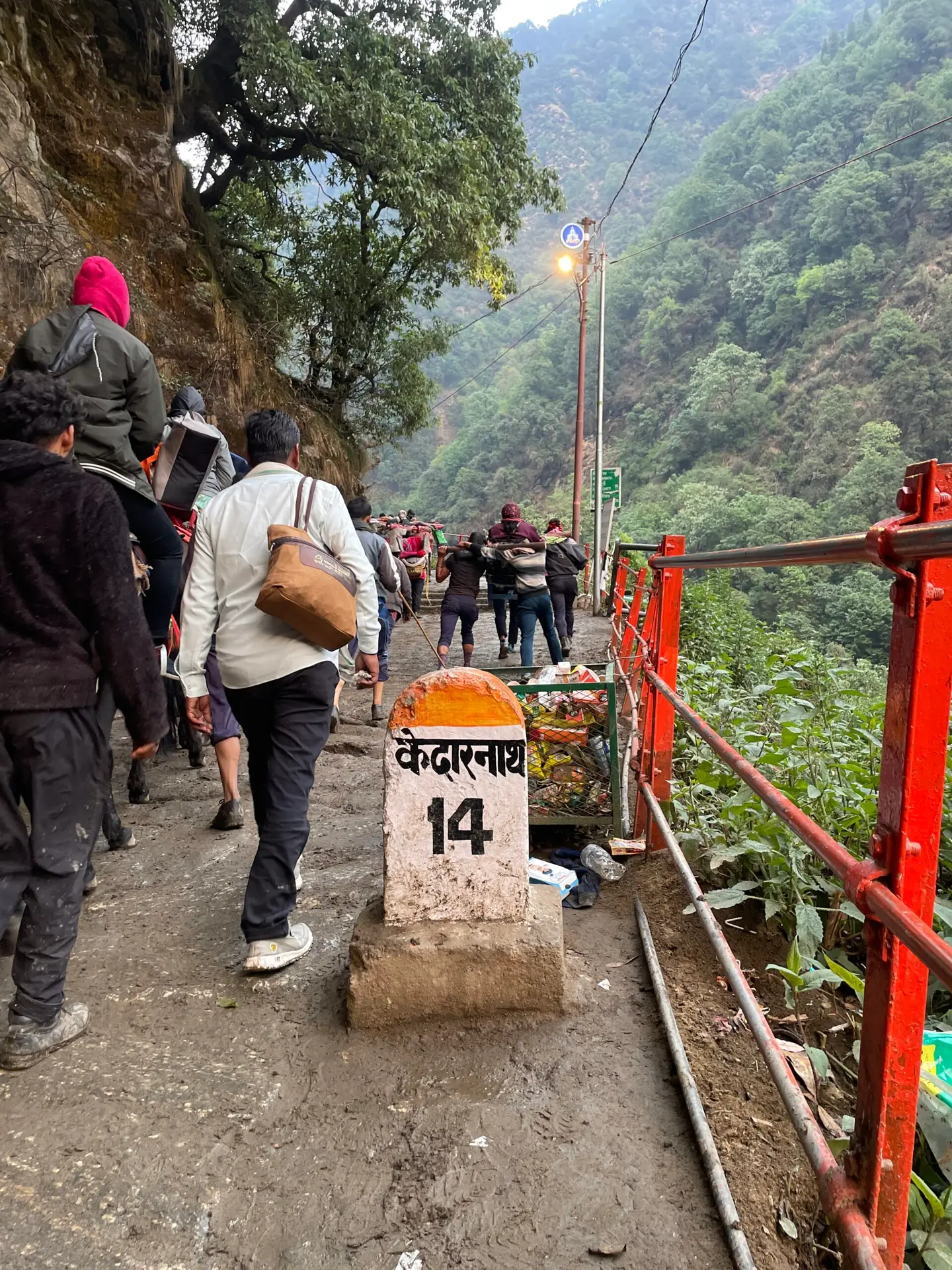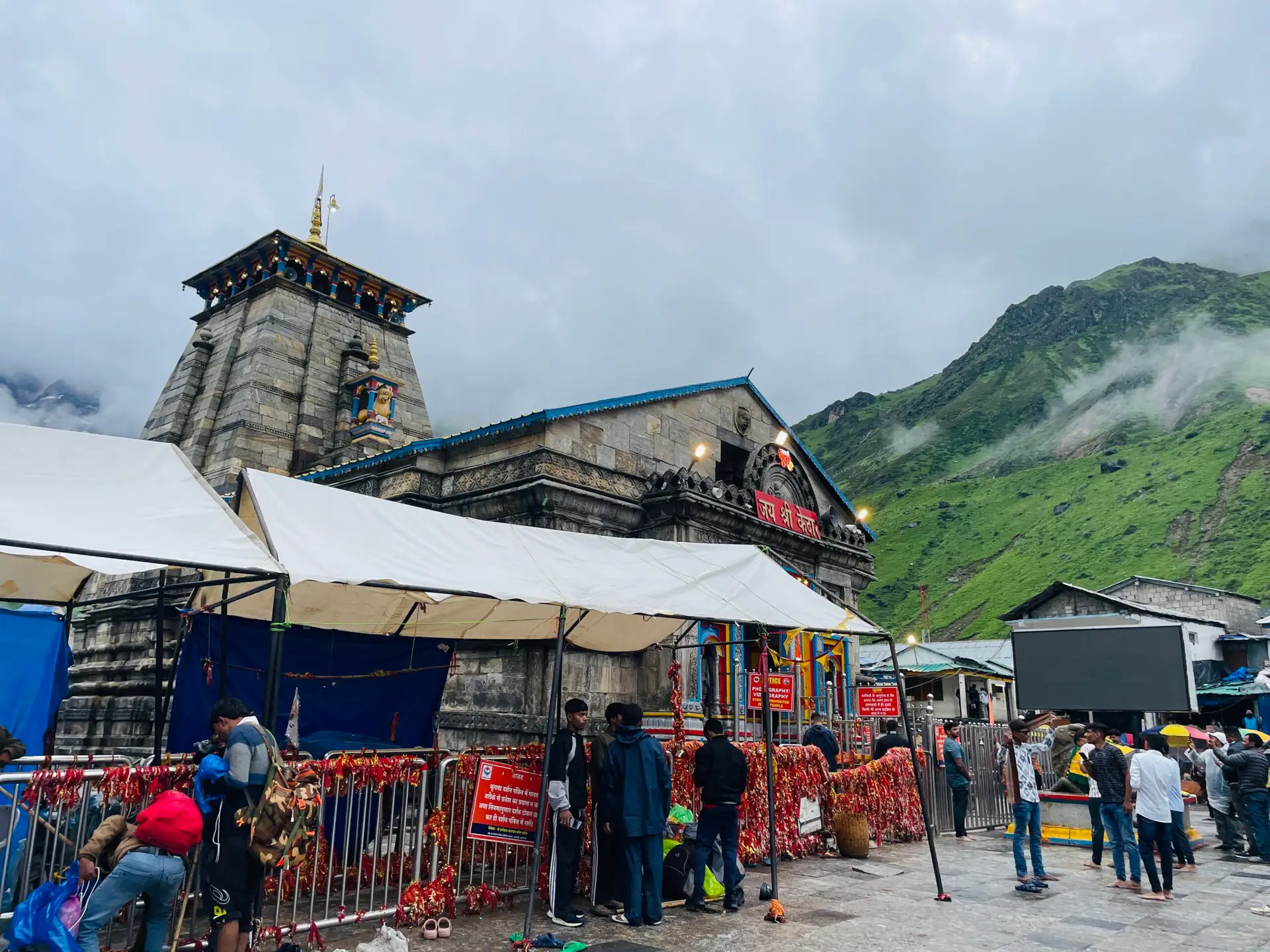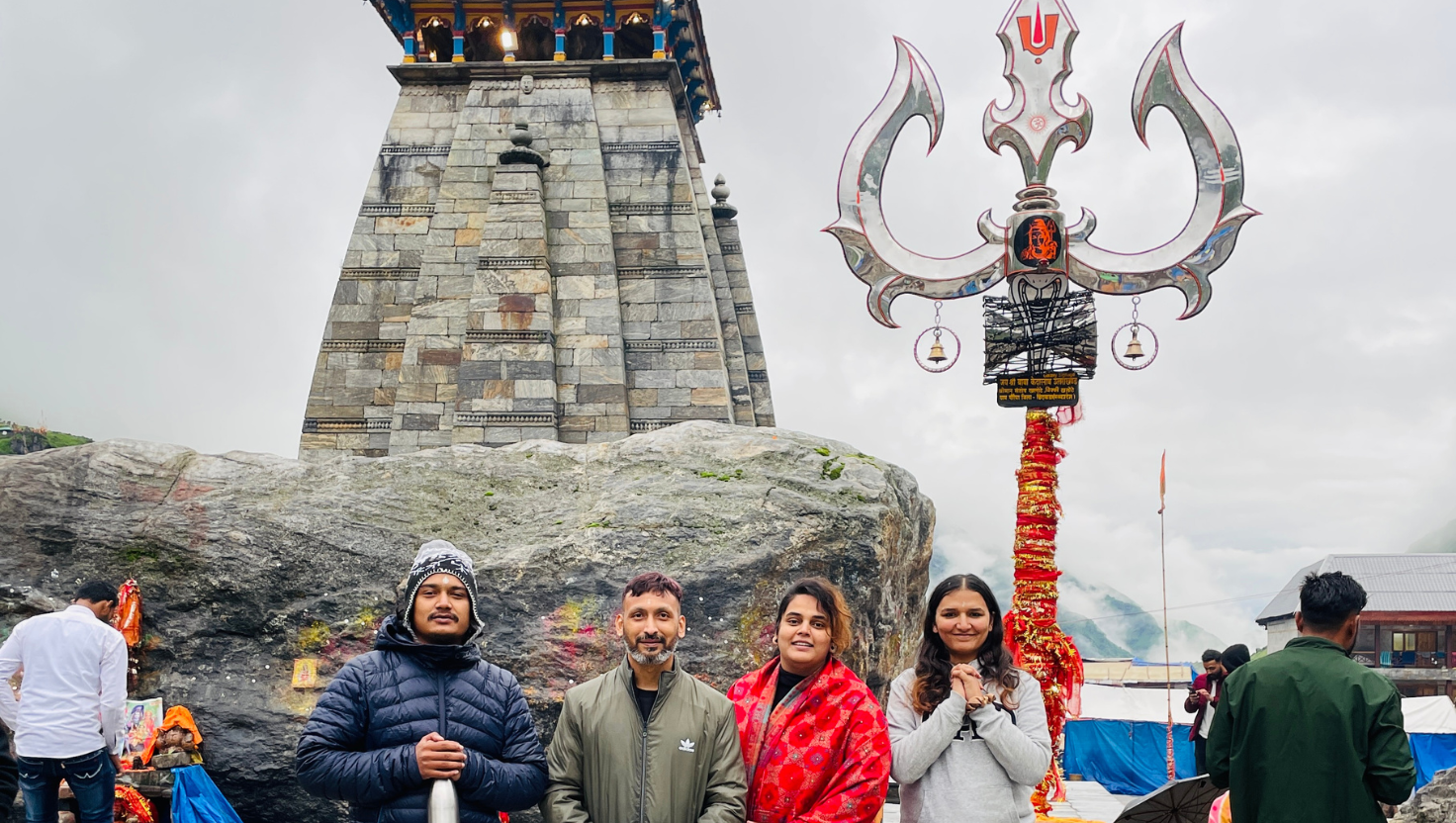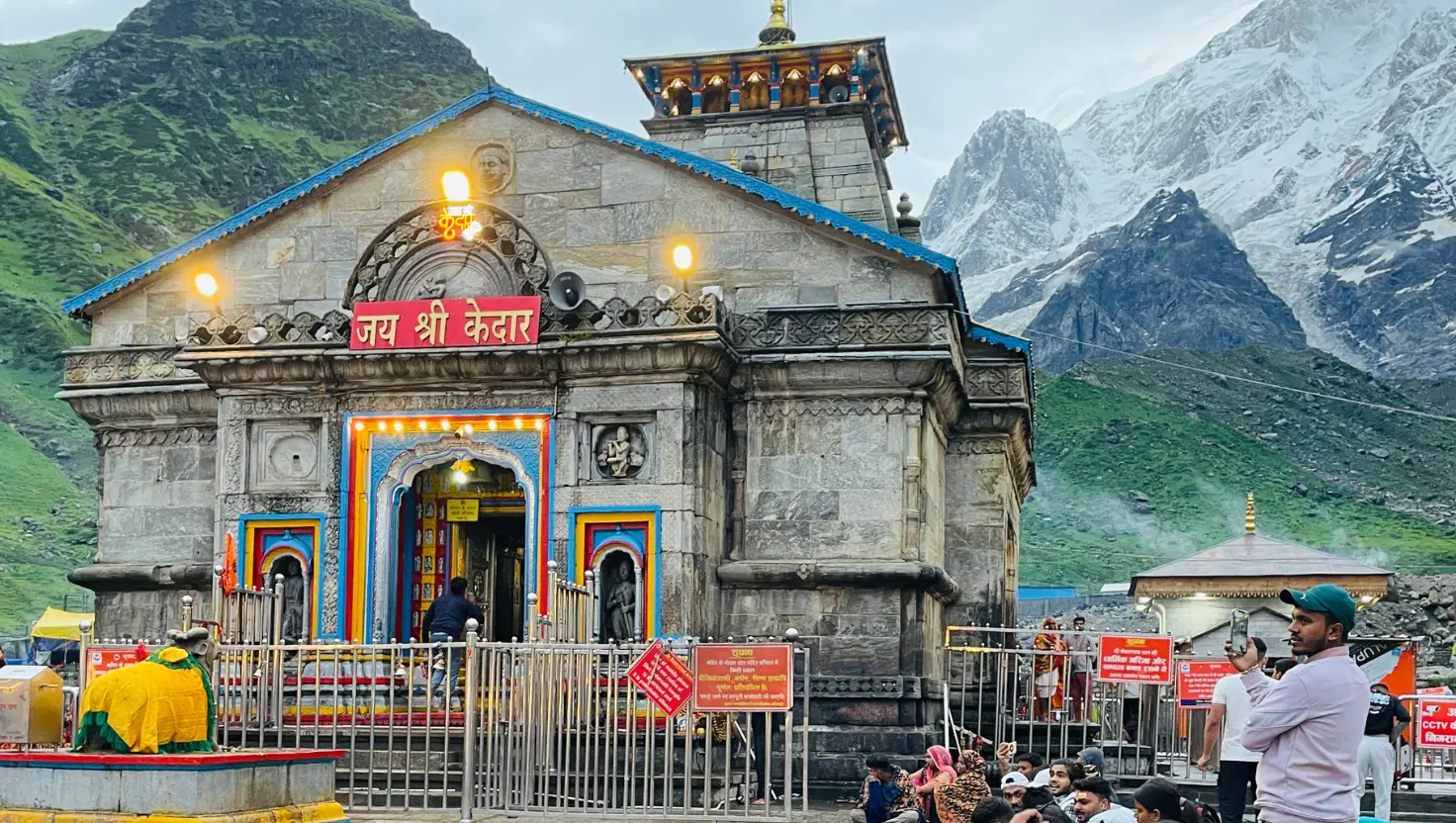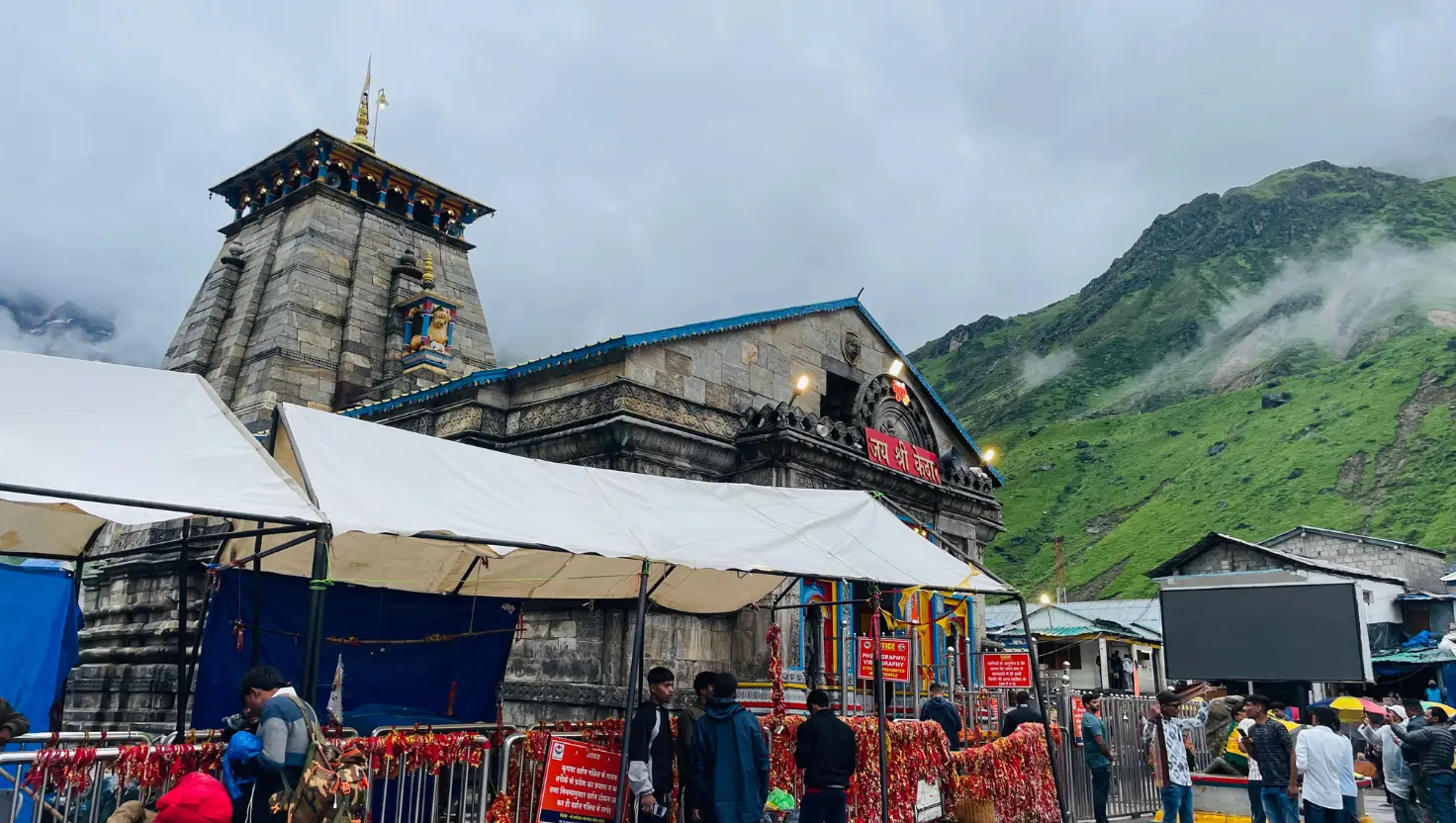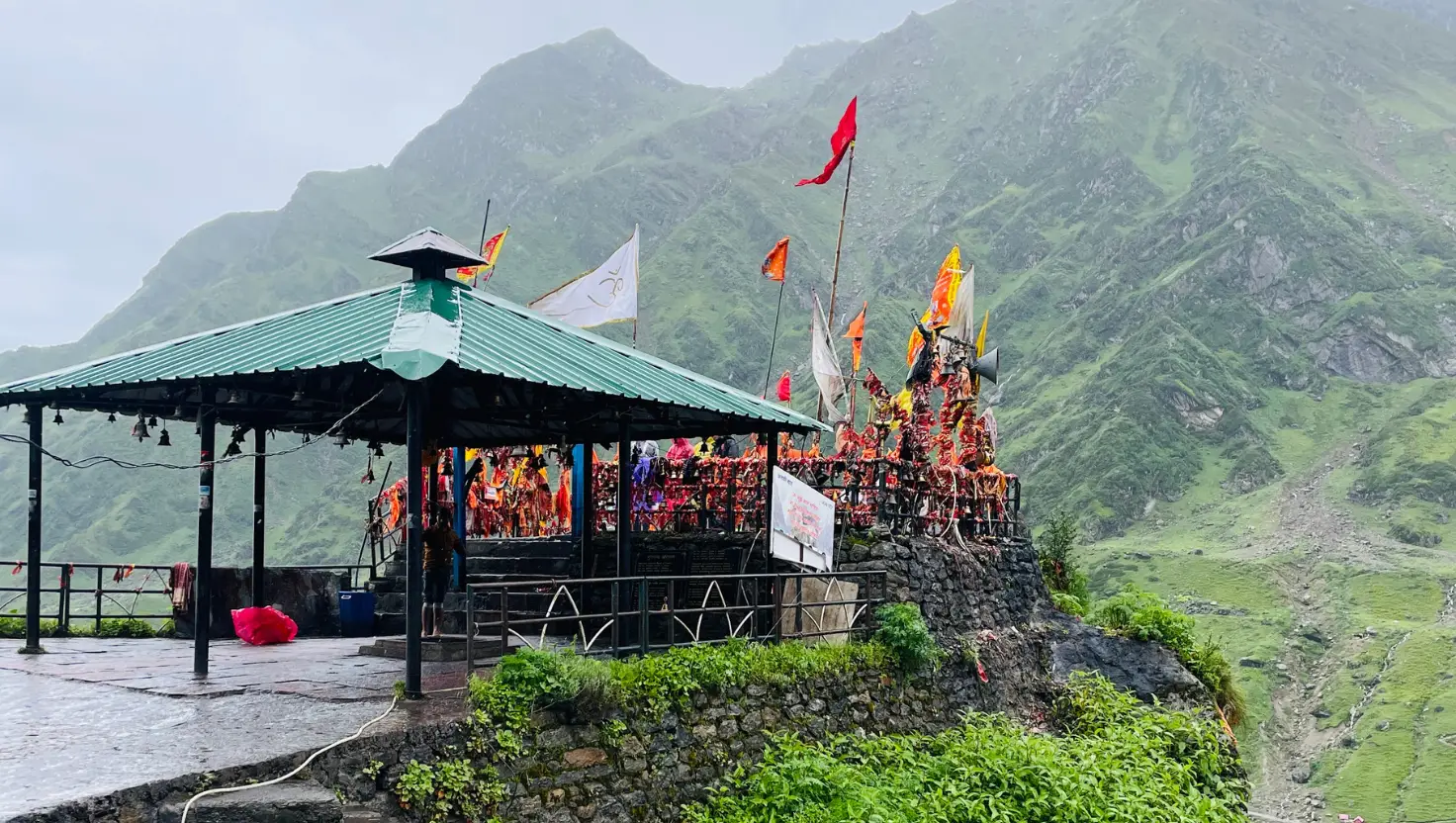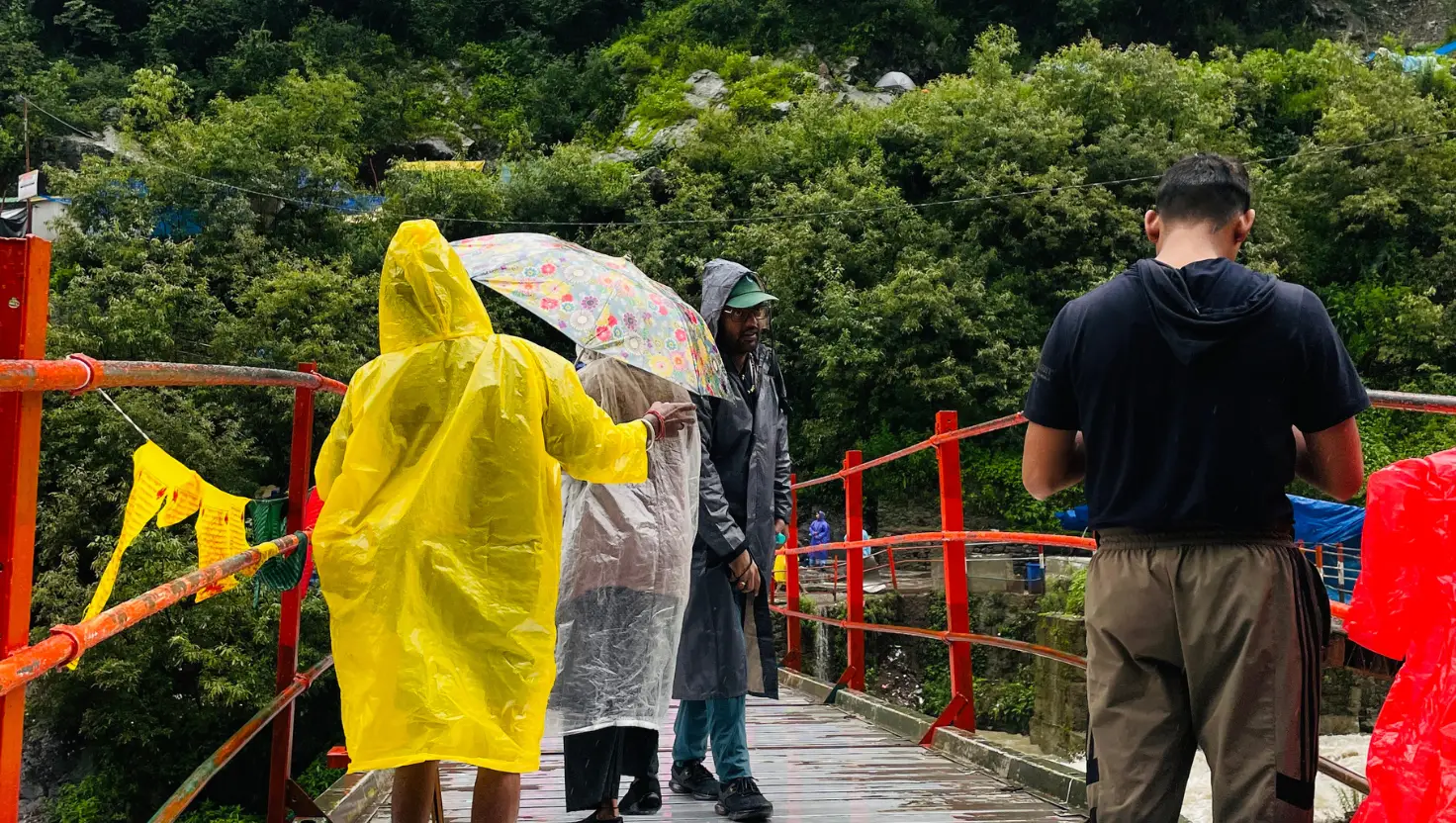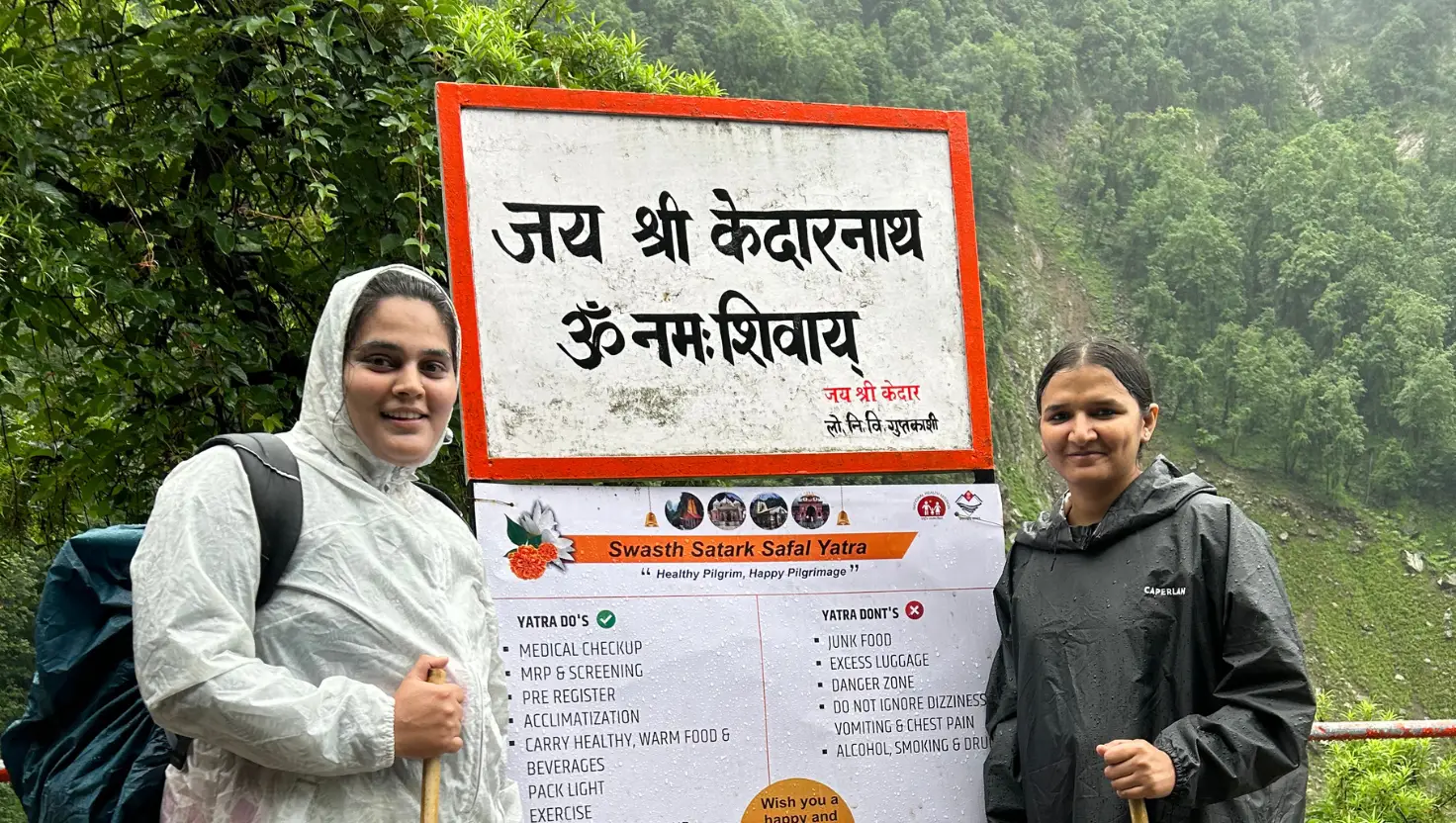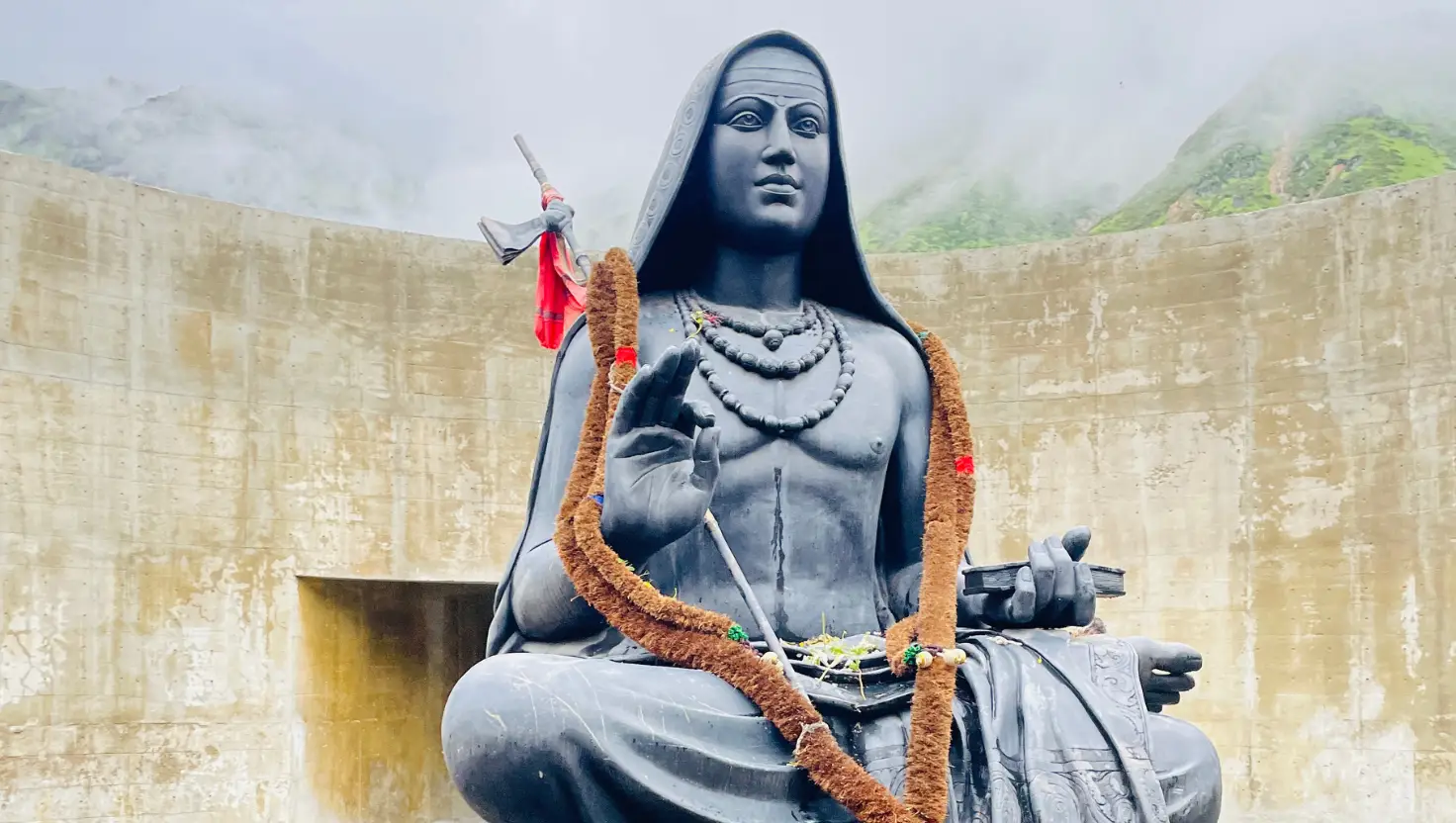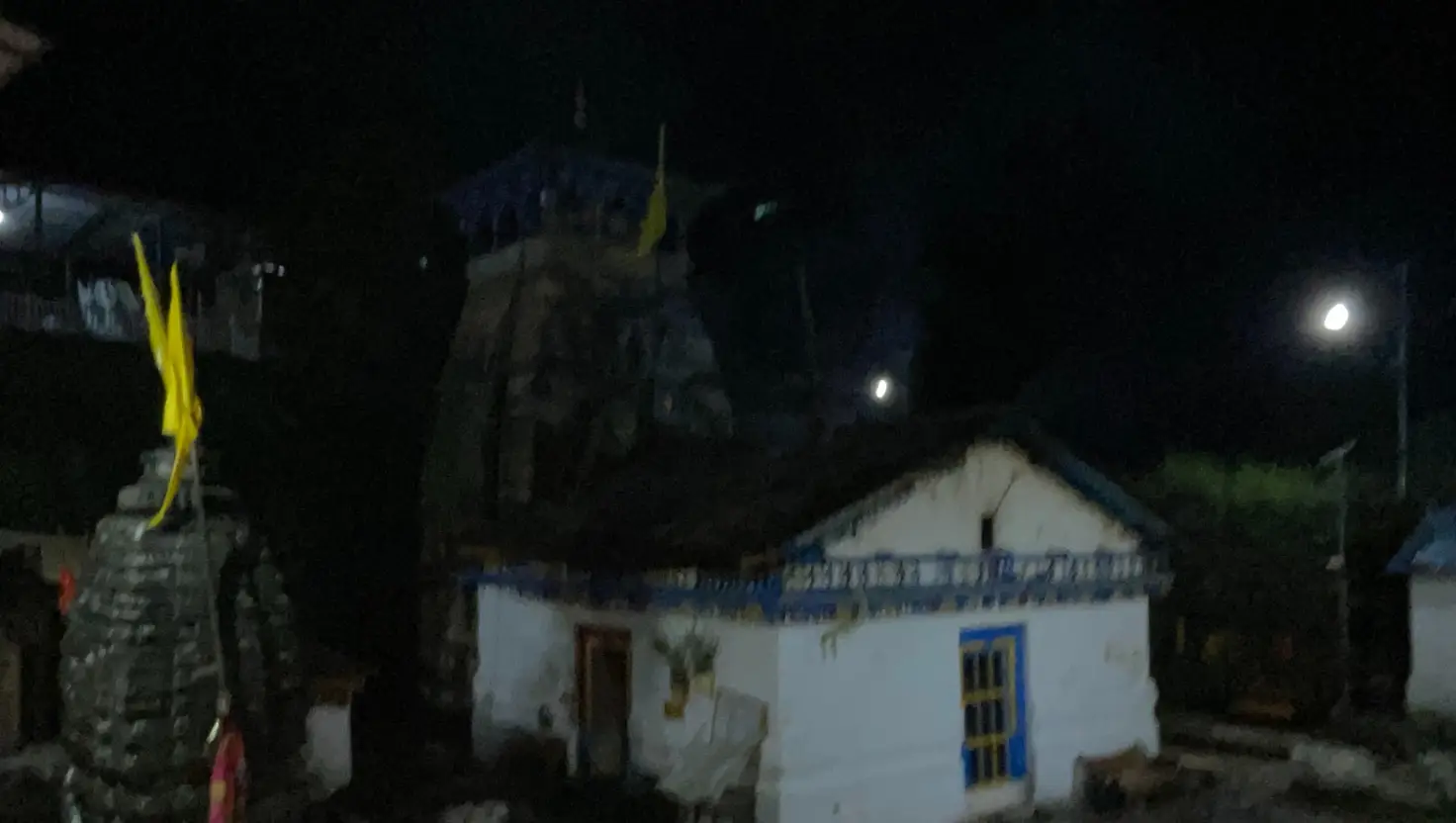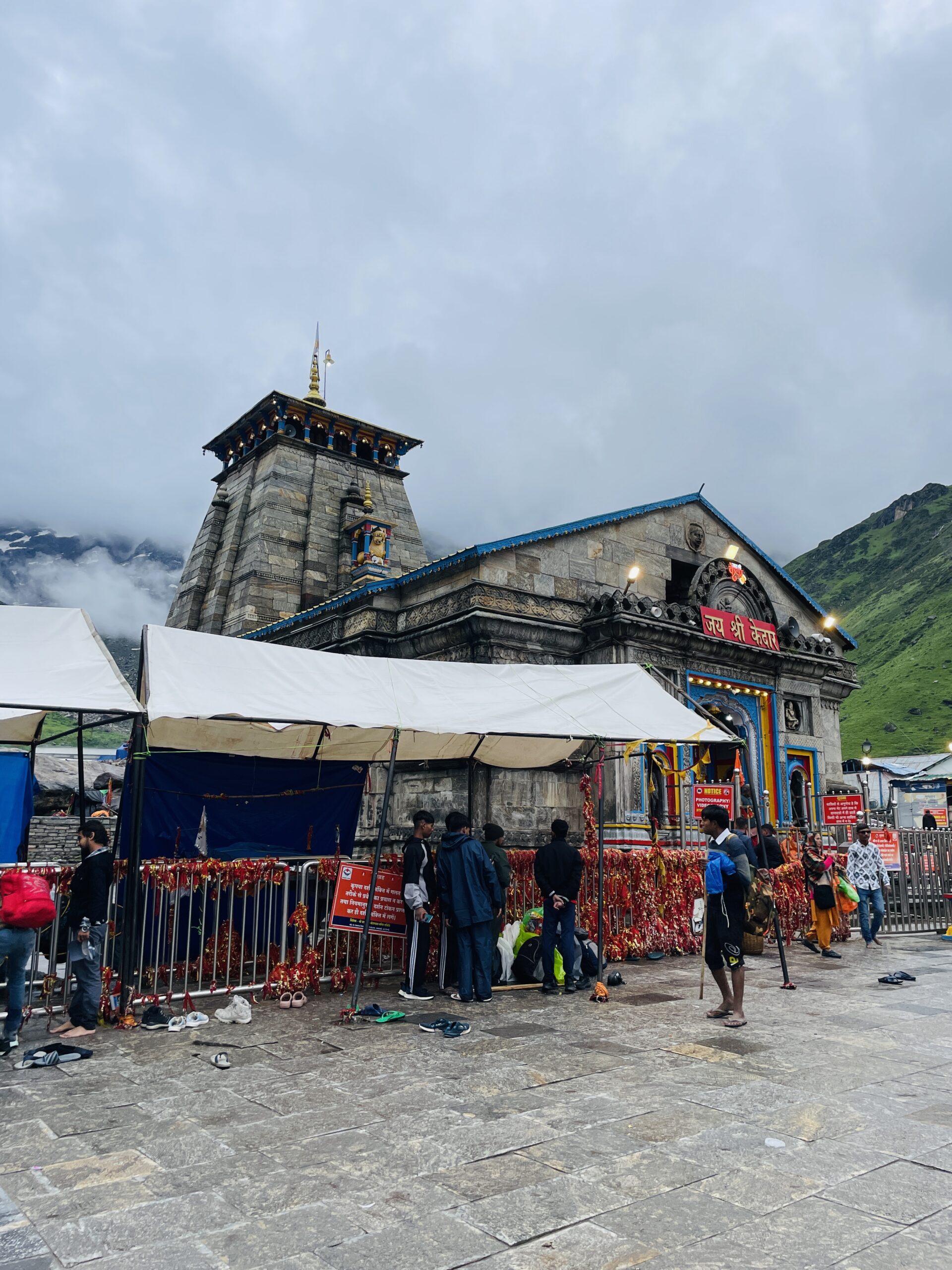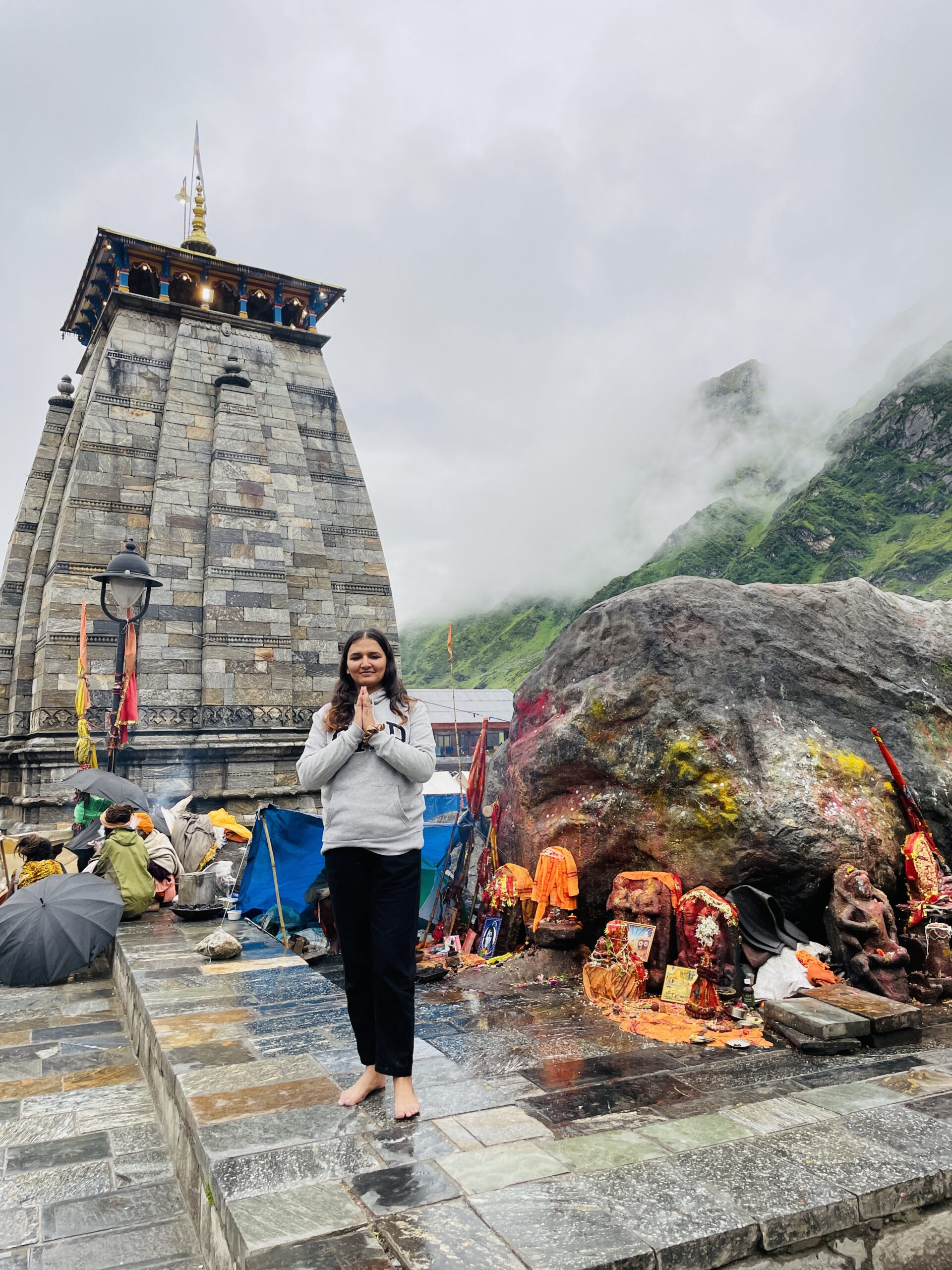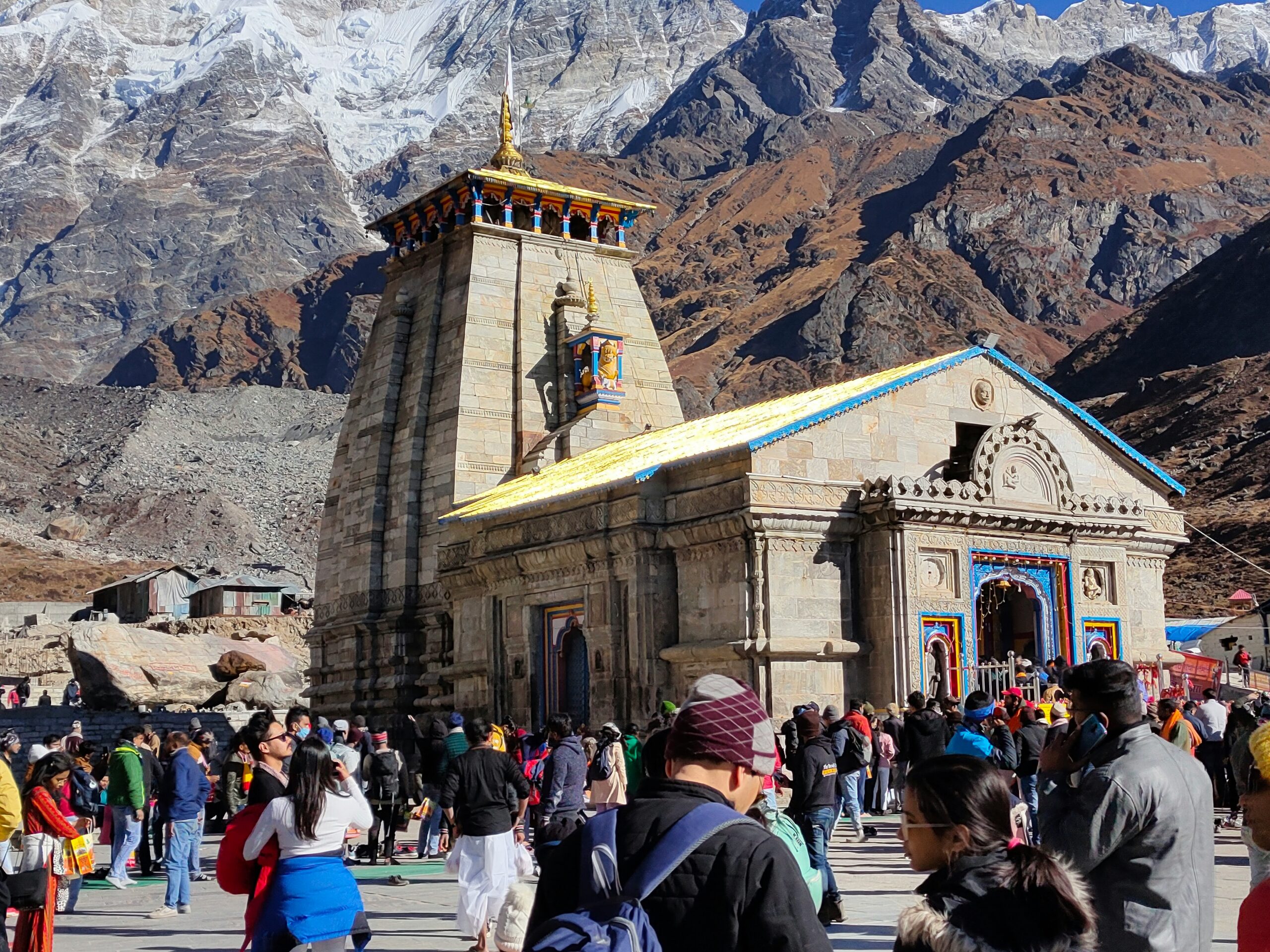Kedarnath Trek | The Ultimate Char Dham Adventure to Kedarnath Temple
Kedarnath Trek | The Ultimate Char Dham Adventure to Kedarnath Temple
Message us to get your itinerary on WhatsApp!
Kedarnath Trek 2025
-
Comfortable Accommodation, seamless Transportation, delicious Meals, and basic Medical Assistance
-
Journey starts and ends at Delhi
-
24/7 Customer Support for any assistance
-
Enjoy breathtaking Sightseeing at all major destinations
-
Early Bird Discounts available — Book now and save!
- Uttarakhand
- Duration: 4D/3N
- Base: Sonprayag
- Grade: Easy to Moderate
- Atlitude: 11,700 ft
- Best time: May to Oct
- Distance: 16KM
-
Last ATM:
Phata,
Rudraprayag
Important Links: Char Dham Yatra 2025
Registration Link: https://registrationandtouristcare.uk.gov.in/signin.php
Helicopter Booking link: https://heliyatra.irctc.co.in/
- Uttarakhand
- Duration: 4D/3N
- Base: Sonprayag
- Grade: Easy to Moderate
- Altitude: 11,700 ft
- Best time: May to Oct
- Distance: 16 KM
- Min Age: 12yrs
- Last ATM: Phata, Rudraprayag
Call our Kedarnath Trek Expert Mr. Anup Singh to know more about the trek
Kedarnath Trek Description – Visit the Holy Kedarnath Jyotirlinga in Uttarakhand.
The Kedarnath Trek is a revered pilgrimage and adventure journey that leads to the Kedarnath Temple, one of the twelve Jyotirlingas of Lord Shiva. Situated at an altitude of 3,583 meters (11,755 feet) in the Garhwal region of Uttarakhand, this trek offers a unique blend of spirituality, natural beauty, and cultural heritage.
Nearby Places to Visit from Kedarnath
- Triyuginarayan Temple – Believed to be the site of Lord Shiva and Parvati’s wedding.
- Vasuki Tal – A beautiful high-altitude lake surrounded by snow-capped peaks.
- Deoria Tal – A scenic lake offering stunning views of Chaukhamba Peak.
- Gandhi Sarovar – A sacred lake near Vasuki Tal, known for its serene beauty.
- Hot Springs at Gaurikund – Natural hot water springs believed to have healing properties.
- Ukhimath – Winter abode of Kedarnath deity and an important pilgrimage site.
- Bhairavnath Temple: Situated just 1 km from Kedarnath, this temple is dedicated to Bhairav, a fierce form of Lord Shiva. The temple offers panoramic views of the valley.
- Adi Shankaracharya Samadhi: Just behind the Kedarnath Temple lies the sacred Samadhi of Adi Shankaracharya. It commemorates the great saint who played a pivotal role in reviving Hinduism and establishing the Char Dham pilgrimage. The recently installed statue of Adi Shankaracharya adds to the spiritual significance of the site, serving as a reminder of his enduring legacy.
These places add extra charm to your Kedarnath trip, offering nature, spirituality, and adventure.
Why It’s Considered Tough:
The Kedarnath Trek is challenging due to several factors:
- High Altitude: Starting from Gaurikund at 1,982 meters, the trek ascends to Kedarnath at 3,583 meters, leading to reduced oxygen levels and potential altitude sickness.
- Steep Terrain: The 16 km uphill journey involves navigating through rugged paths, making it physically demanding.
- Unpredictable Weather: Sudden changes in weather conditions can make the trek more challenging, especially during the monsoon season.
- Limited Facilities: The route passes through remote areas with basic amenities, requiring trekkers to be self-sufficient.
Wildlife of Kedarnath Wildlife Sanctuary
The Kedarnath Wildlife Sanctuary, established in 1972, spans approximately 975 square kilometers across the Chamoli and Rudraprayag districts of Uttarakhand. It is renowned for its rich biodiversity, encompassing a diverse range of species across various habitats, from temperate forests to alpine meadows.
- Snow Leopard (Panthera uncia): This elusive big cat is a flagship species of the sanctuary, inhabiting high-altitude regions above 3,500 meters. Their thick fur provides camouflage in snowy terrains.
- Himalayan Black Bear (Ursus thibetanus): Found in oak and conifer forests between 2,000 to 3,000 meters, these omnivores are often seen standing on their hind legs to reach fruits.
- Himalayan Musk Deer (Moschus leucogaster): A shy, solitary creature known for its distinctive musk gland, inhabiting the higher altitudes of the sanctuary.
- Indian Leopard (Panthera pardus) and Indian Jackal (Canis aureus): These carnivores are commonly found throughout the sanctuary.
Yellow-throated Marten (Martes flavigula): A small, agile predator often seen in forested areas.
Red Giant Flying Squirrel (Petaurista petaurista): Notable for its large size and gliding ability, this nocturnal mammal is found in the dense forests of the sanctuary. - Royle’s Pika (Ochotona roylei): A small herbivorous mammal inhabiting alpine regions, known for its high-pitched calls.
- Himalayan Monal (Lophophorus impejanus): The state bird of Uttarakhand, known for its vibrant plumage, often spotted in alpine meadows.
- Snow Partridge (Lerwa lerwa) and Koklass Pheasant (Pucrasia macrolopha): These pheasants are adapted to the high-altitude terrains of the sanctuary.
- Kalij Pheasant (Lophura leucomelanos): A forest-dwelling bird with distinctive black plumage.
- Bearded Vulture (Gypaetus barbatus) and Golden Eagle (Aquila chrysaetos): These raptors are often seen soaring above the sanctuary’s cliffs.
- West Himalayan Bush Warbler (Locustella kashmirensis) and Little Pied Flycatcher (Ficedula westermanni): These insectivorous birds are commonly found in the dense undergrowth.
Route:
The trek from Gaurikund to Kedarnath covers a distance of approximately 16 kilometers (10 miles) and is the primary route for pilgrims and trekkers visiting the Kedarnath Temple, one of the twelve Jyotirlingas of Lord Shiva. Situated at an elevation of 3,583 meters (11,755 feet), Kedarnath is nestled amidst the majestic Garhwal Himalayas in Uttarakhand, India
Route Overview
- Starting Point: Gaurikund, a small town accessible by road, serves as the base for the trek.
- Trek Distance: Approximately 16 km (10 miles) uphill.
- Trek Duration: Typically takes 6 to 8 hours to ascend, depending on individual fitness levels and pace
- Altitude Gain: The trek involves an elevation gain of about 1,200 meters (3,937 feet), which can lead to altitude-related challenges like Acute Mountain Sickness (AMS)
Peaks:
From the Kedarnath Temple, trekkers are treated to views of several prominent peaks:
- Kedarnath Peak: Standing at 6,940 meters, it’s the highest peak on the south side of the Gangotri Glacier.
- Kedarnath Dome: At 6,831 meters, it’s the third highest peak in the region.
- Chaukhamba Peak: Known for its four summits, it provides stunning views and is a popular trekking destination.
- Mount Shivling: Located behind the Kedarnath Temple, it’s part of the Gangotri Group of peaks.
Best Time to Visit
The best time for the Kedarnath Trek is from April to June (summer) and September to early November (post-monsoon). During these periods, the weather is pleasant, skies are clear, and temperatures range from 5°C to 15°C, making the trek safe and enjoyable. The temple remains open only during these months.
All Panch Kedar (Brief Overview)
Kedarnath – Represents Shiva’s hump, the most visited Kedar.
Madmaheshwar – Represents Shiva’s navel or stomach, offering serene surroundings and scenic trails.
Tungnath – Represents Shiva’s arms, situated at one of the highest Shiva temples in the world.
Rudranath – Represents Shiva’s face, known as the toughest trek among the five.
Kalpeshwar – Represents Shiva’s hair or head, accessible year-round and located at lower altitudes.
History of Kedarnath Temple
The Kedarnath Temple is one of the twelve Jyotirlingas of Lord Shiva and holds great spiritual and historical importance. According to legend, the temple was originally built by the Pandavas after the Mahabharata war to seek Lord Shiva’s forgiveness. The present stone structure was built by Adi Shankaracharya in the 8th century, reflecting ancient Himalayan architecture.
Perched at 3,583 meters (11,755 feet), Kedarnath is one of the highest temples in the world. It has stood strong against many natural disasters, most notably the 2013 Uttarakhand floods, where it remarkably survived while much of the surrounding area was devastated. Today, it remains a powerful symbol of faith and resilience, attracting thousands of pilgrims during the open season from April to November.
Local Culture
The local culture around Kedarnath is deeply connected to Hindu traditions, especially the worship of Lord Shiva. The region is inhabited by the Garhwali people, who are known for their simple lifestyle, hospitality, and strong spiritual beliefs.
Major festivals like Makar Sankranti and Baisakhi are celebrated with traditional folk dances, songs, and rituals, reflecting the deep cultural heritage of the region. The locals follow age-old customs, and their daily life revolves around agriculture, animal husbandry, and pilgrimage services.
The local cuisine is simple but flavorful, using locally grown ingredients. Popular dishes include Aloo Ke Gutke (spicy potatoes) and Chainsoo (a dish made from black gram dal), served with mandua roti (finger millet flatbread).
This blend of devotion, tradition, and simplicity gives the Kedarnath region a unique cultural charm.
INCLUSIONS
-
Delhi to Delhi
-
Accomodation: Hotel/Home Stay/Camps
-
Meals breakfast from first day you when check in to check out breakfast.(3 breakfast & 3Dinner)
-
Permits & Fees: All necessary forest entry passes and trek permits included.
-
Guidance: Professional, certified trek leaders and friendly local support staff to assist you.
-
Medical Support: First-aid kits, oxymeters, and oxygen cylinders available at campsites for emergencies.
-
24/7 Customer Support for any assistance.
-
Hygiene & Safety: Regularly sanitized campsites, safe sleeping arrangements, and clean surroundings maintained.
EXCLUSION
-
5% GST (Goods & Services Tax) is extra
-
Any services/items not specifically listed under “Inclusions”
-
Meals during travel to/from the base location
-
Personal expenses like tips, phone calls, or extra snacks
-
Additional accommodation or stay caused by roadblocks, landslides, or heavy snowfall
-
Backpack offloading charges and personal porter/mule costs
-
Emergency evacuation expenses (if required)
Kedarnath Trek- Itinerary (4D/3N)
Kedarnath Trek- Itinerary (4D/3N)
Day 1:Delhi to Sitapur via Devprayag & Dhari Devi
- Distance: 520 KM
- Travel Time: 14 hours
- Pickup Point: Botanical Garden Metro Station, Gate No. 4, Noida & 60's Cafe, Rishikesh
- Altitude Gain: 5,200 ft
Your journey begins with a night departure from Delhi. Early morning, you’ll reach Devprayag, where the sacred rivers Alaknanda and Bhagirathi merge to form the Ganges. This is your first sightseeing stop.
Next, proceed to Dhari Devi Temple, a revered shrine with panoramic views of the Himalayas. After the darshan, continue your journey toward Sitapur, a peaceful town nestled in the mountains.
In the evening, check into your hotel, enjoy a warm dinner (included), and rest for the next day’s trek.
Day 2: Sitapur – Sonprayag – Gaurikund – Kedarnath
- Trek Distance: 16 km
- Trek Time: 8 hours
- Total Altitude: 11,700 ft
- Difficulty: Easy to Moderate
After an early breakfast (included), depart from Sitapur to Sonprayag. From here, take a shared shuttle taxi to Gaurikund, the starting point of the Kedarnath trek.
After reaching Gaurikund, have your breakfast (included), then begin the trek towards Kedarnath, passing through scenic locations like Bheembali or Jungle Chatti. Trek through dense forests, alpine meadows, and rocky paths.
By evening, arrive at Kedarnath, check into the hotel, and have a wholesome dinner (included).
Day 3: Kedarnath Darshan and Return to Sitapur
- Trek Distance: 16 km
- Trek Time: 8 hours
- Total Altitude:5,200 ft
- Difficulty: Easy to Moderate
Start your day with a visit to the Kedarnath Temple for darshan and seek blessings at this sacred Jyotirlinga.
Post darshan, checkout from the hotel and visit Bhairavnath Temple, an important nearby shrine.
After breakfast (included), begin your descent trek back to Sitapur, where you will stay overnight.
Day 4:Sitapur to Delhi
- Drive Distance: 520 km
- Trek Time: 14 hours
After breakfast, start your return journey to Delhi. Relish the beautiful landscape one last time as you travel back to your home city.
Kedarnath Trek 2025 - Guided Map
Click Here
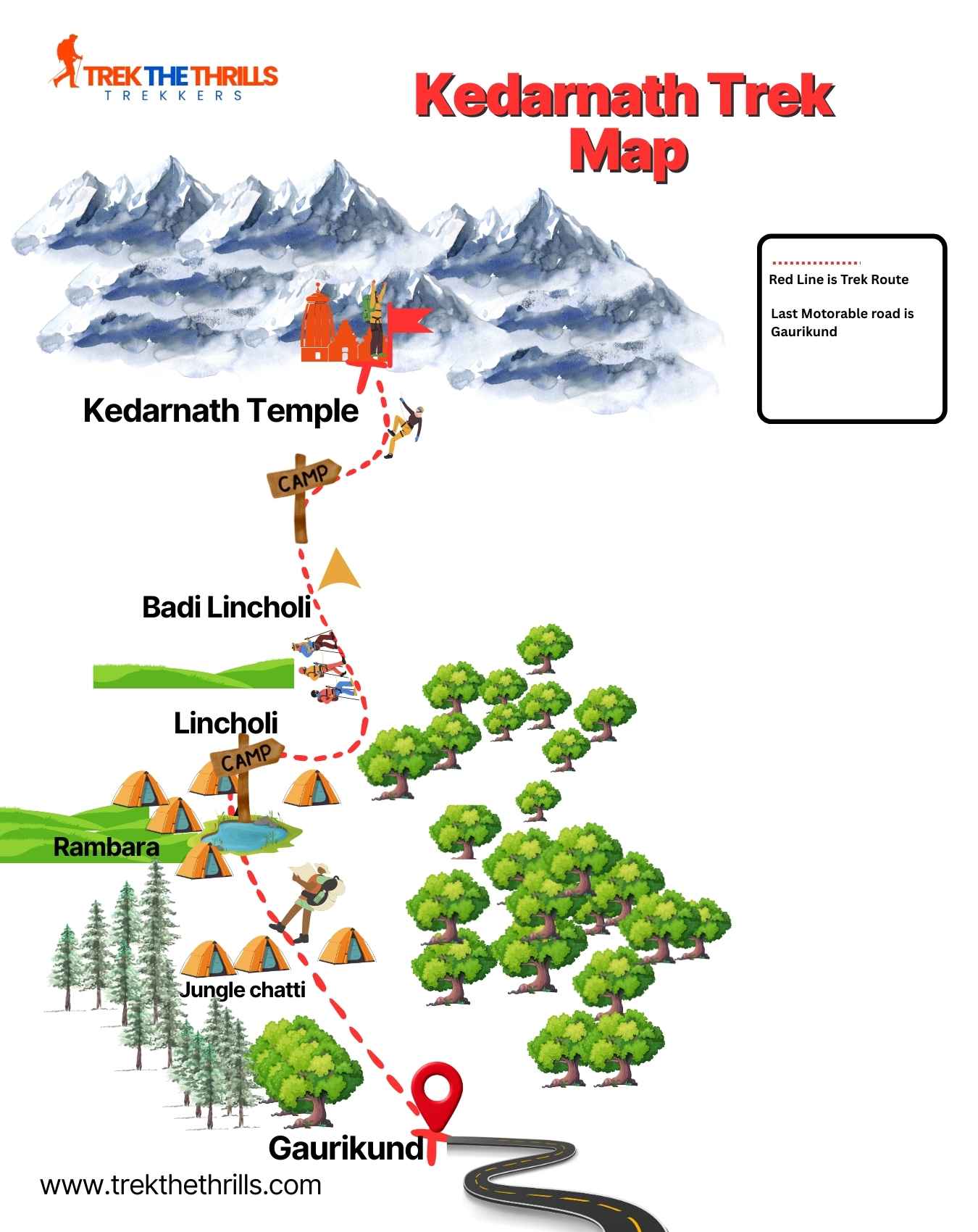
Kedarnath Trek 2025 Essentials
- 🎒Gear & Equipment
- A sturdy rucksack (60–70 L with rain cover)
- Trekking shoes with good
grip (men’s/women’s) - Trekking pole (highly recommended)
- Headlamp/torch with spare batteries
- Poncho or rain jacket
- 🧥 Clothing
- 1 down jacket (for extreme cold)
- 1 fleece or light woollen jacket
- 2 trekking pants (quick dry preferred)
- Thermal wear (top & bottom)
- Warm socks (2–3 pairs) + cotton socks
- Woollen cap & sun cap
- Waterproof/woollen gloves
- Extra warm layers for nights
- Comfortable lowers for camping
- 🍽️ Utensils & Documents
- Lunch box, plate & spoon
- Coffee mug/water bottle (or hydration bladder)
- Government-issued photo ID proof
- 🧴 Personal Care
- Sunglasses (UV protected)
- Sunscreen (SPF 30+) & lip balm
- Moisturiser
- Hand towel
- Toilet paper & wet wipes (unscented)
- Pocket-sized soap/handwash
- Sanitizing toilet spray
- Ziplock bags (for waste segregation)
- Toothbrush & toothpaste
- 🩹 Health & Utilities
- Basic first-aid kit (with prescribed medicines)
- Energy bars & dry snacks
- Power bank
- Sandals/floaters (for campsites)
- Balaclava or scarf for wind protection
How to Reach Base ( Sonparyag)
- AIR
- TRAIN
The nearest railway station is Rishikesh Railway Station, approximately 216 km from Gaurikund.
From Rishikesh, you can hire a taxi or use bus services to reach Devprayag → Sitapur → Sonprayag → Gaurikund.
- ROAD
Kedarnath is well-connected by road through Rishikesh → Devprayag → Sitapur → Sonprayag → Gaurikund.
Regular bus services are available from Rishikesh, Dehradun, and other major towns to Sonprayag and Sitapur.
For official government-operated services, you can check the Uttarakhand Transport Corporation (UTC) website:
Uttarakhand Transport Corporation Official Site
From Sonprayag, shared taxis or shuttle services are available to reach Gaurikund, the starting point of the Kedarnath trek.
FAQ's of Kedarnath Trek
Q1.What is the distance of the Kedarnath trek?
Q2What is the difficulty level of the trek?
The Kedarnath trek is considered moderately difficult. The trail is steep in parts, with rocky paths and uneven terrain, especially towards the higher altitudes. It is advisable to be physically prepared and acclimatize to the altitude before embarking on the trek.
Q3.What are the best months to visit?
Q4.Is there any ATM facility in Kedarnath?
Q5.What is the altitude of Kedarnath Temple?
The Kedarnath Temple is situated at an elevation of approximately 3,583 meters (11,755 feet) above sea level. The trek from Gaurikund to the temple involves a significant altitude gain.
Q6. Are there any specific trekking timings?
Yes, due to safety regulations:
Start the trek from Gaurikund before 1:30 PM.
No one is allowed to continue the trek after 5:00 PM from Bheembali and 6:00 PM from Linchauli.
These timings are enforced to ensure trekkers reach their destination before dark.
Q7.Is the trek safe during monsoon?
Q8.Can I hire a pony or palki for the trek?
Q9.Is there any mobile network coverage in Kedarnath?
Mobile network coverage is generally unavailable in Kedarnath. It is recommended to inform family or friends about your travel plans and expected return time.
Q10. Are there any medical facilities along the trek?
Basic medical facilities are available at various points along the trek, including Gaurikund, Bheembali, and Kedarnath. However, it is advisable to carry personal medications and a first aid kit.
Q11.What is the weather like in Kedarnath?
Q12.Are there any accommodation facilities available?
Why Trek with Trek The Thrills?
Local Expert Guides
Trek with experienced and certified Himalayan leaders who ensure safety and share deep insights about the mountains, culture, and traditions.
Quality Trekking Gear
We provide high-quality tents, sleeping bags, and equipment to make sure your adventure is safe, reliable, and comfortable.
Safety & Medical Support
Your safety is our top priority. Our team carries first-aid kits, oxygen support, and is trained to handle emergencies at high altitudes.
Affordable Transparent Packages
As the best trekking agency in Uttarakhand, we believe in fair pricing with no hidden costs—so you can focus only on the experience.
Small Group Experience
We keep our batches small to give you personalized attention, better safety, and a richer Himalayan experience.
24/7 Support & Assured Departures
Enjoy hassle-free booking and guaranteed departures. Our support team is always available before, during, and after your trek.


